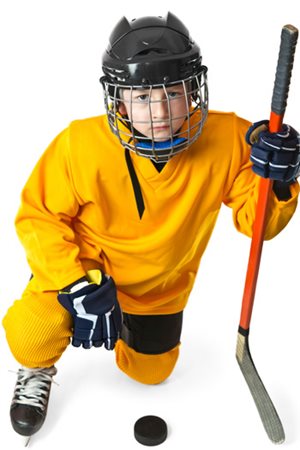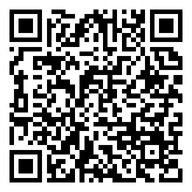 Overview
Overview
About 65,000 people were treated for hockey injuries in 2012. Hockey starts with youth leagues and progresses to high school and college teams. Programs for girls have also become more popular.
Common Injuries
Hockey is a collision sport. Injury risk is minimized with proper equipment. Many injuries are simple bruises, cuts, and muscle strains. More serious injuries may occur and include concussions, tooth injuries, fractures, and spinal cord injuries. In addition to these traumatic injuries, overuse injury may occur from repetitive actions.
Some specific injuries to watch out for:
Head:
After any hit to the head, players should be carefully screened for any signs of a concussion. You do not have to be knocked out to get a concussion. A doctor should evaluate anyone complaining of pain, dizziness, or confusion. If you have these symptoms you should not play until cleared by your doctor.
Shoulder:
Shoulder separations or collarbone fractures can occur from hitting the boards or the ice.
Hip:
Acute and overuse type injuries can occur, such as bruises (hip pointers) or strains.
Face:
Facial cuts and broken teeth can occur if helmets without face guards are worn.
Knee:
Injuries to the knee can occur from a direct hit or due to the motion of skating. Bruises, fractures or ligament injuries including the medial collateral ligament (MCL) and the anterior cruciate ligament (ACL) may occur.
Ankle:
Skate bite or lace bite is a term for inflammation around the tendons over the front of the ankle. Poor fitting skates, a poor quality boot tongue, or laces that are tied too tight cause skate bite. It typically shows up as swelling and redness at the front of the ankle and pain while skating. Foam or pads in the skate can alleviate this problem.
Before You Play
Learning how to skate well is the most important first step to playing hockey. Players should learn to skate forwards, backwards, and stop in hockey skates prior to beginning to play with other kids.
All kids need to be fit with the proper equipment. The next step is learning the rules and proper techniques for safe hockey play. Hockey is a collision sport but can be played safely. Keeping the head up on impact and trying to hit the boards with the shoulder first can reduce the chance of head or neck injury. Also, rules such as “no checking from behind” are designed to protect players.
Equipment
Proper safety equipment is important in hockey. There are many pieces needed and it is important that they be in good condition and fit appropriately. The list includes:
Standard equipment:
- Helmet
- Face shield
- Mouth guard
- Neck guard
- Shoulder pads
- Elbow pads
- Gloves
- Jock cup
- Hockey pants (specially padded)
- Shin guards
- Hockey skates
- Hockey stick
Additional goalie equipment:
- Chest protector
- Goalie leg pads
- Blocker
- Catching glove
- Goalie stick
Injury Prevention Tips
- Have a pre-season exam with your doctor to identify any condition that may lead to in-season injuries.
- Practice skating in hockey skates, which are different than figure skates (most common for rental skates).
- Learn to skate with control before adding in hockey skills. Many rinks will offer an instructional skills class for new hockey players.
- There are many stores that will offer used equipment, which can help with the cost. Be sure that all required equipment is in good condition and fits well.
- Learn the rules and follow them. Make sure that coaches are encouraging the proper approach to safe play.
- Always keep your head up!
- Keep active in the off-season to improve strength and endurance. Play different sports to cross-train.
- Stretching before and after activity is important in growing children and teenagers.
More Information
Page QR Code:


 POSNA.org
POSNA.org
 Overview
Overview